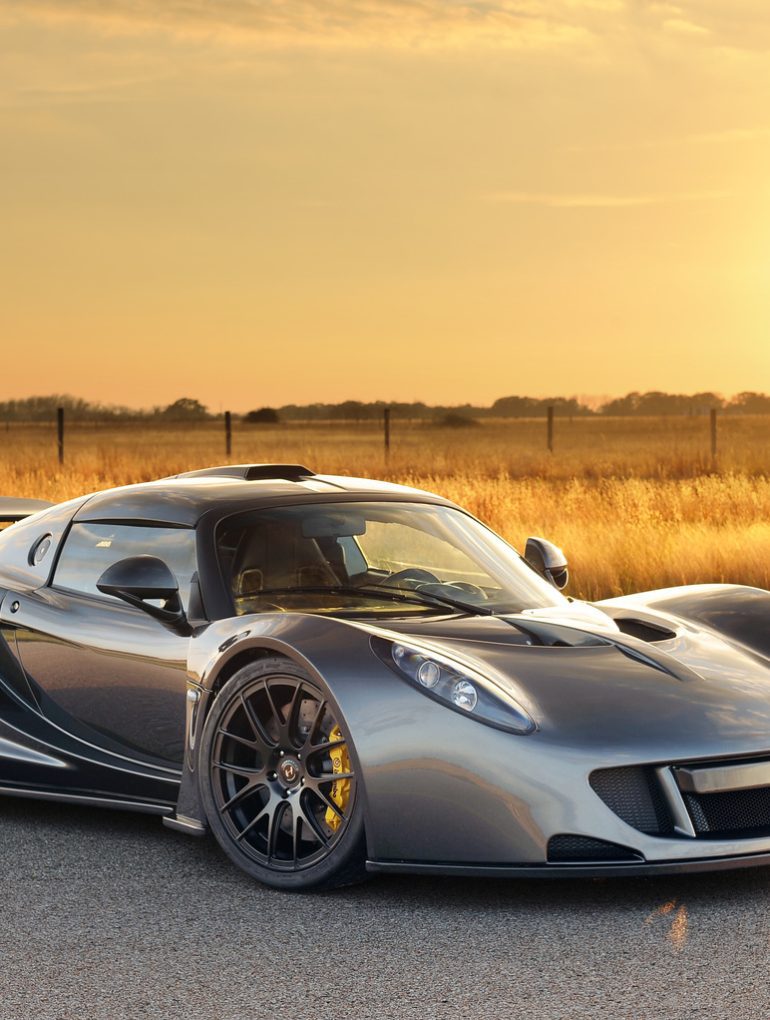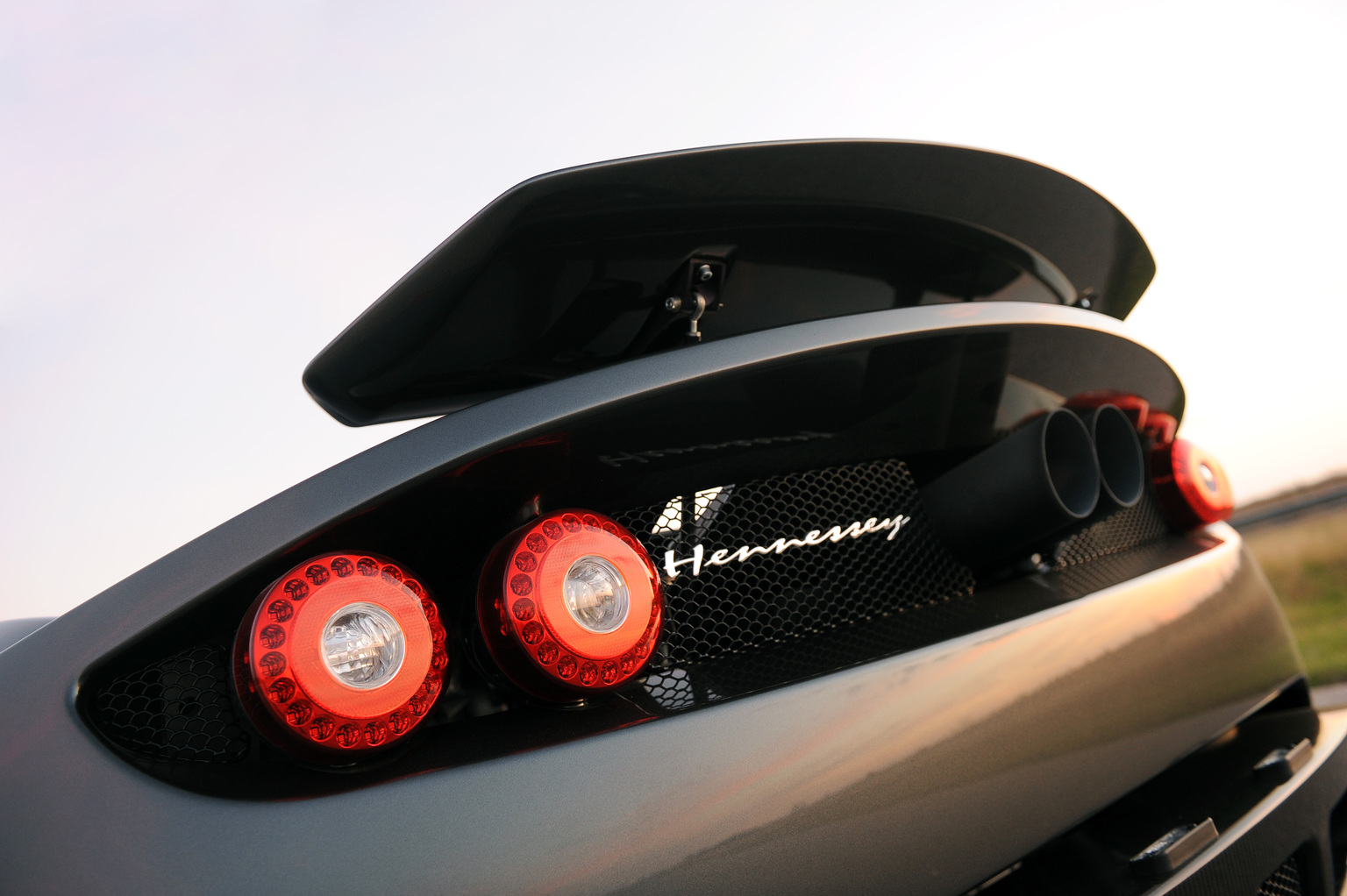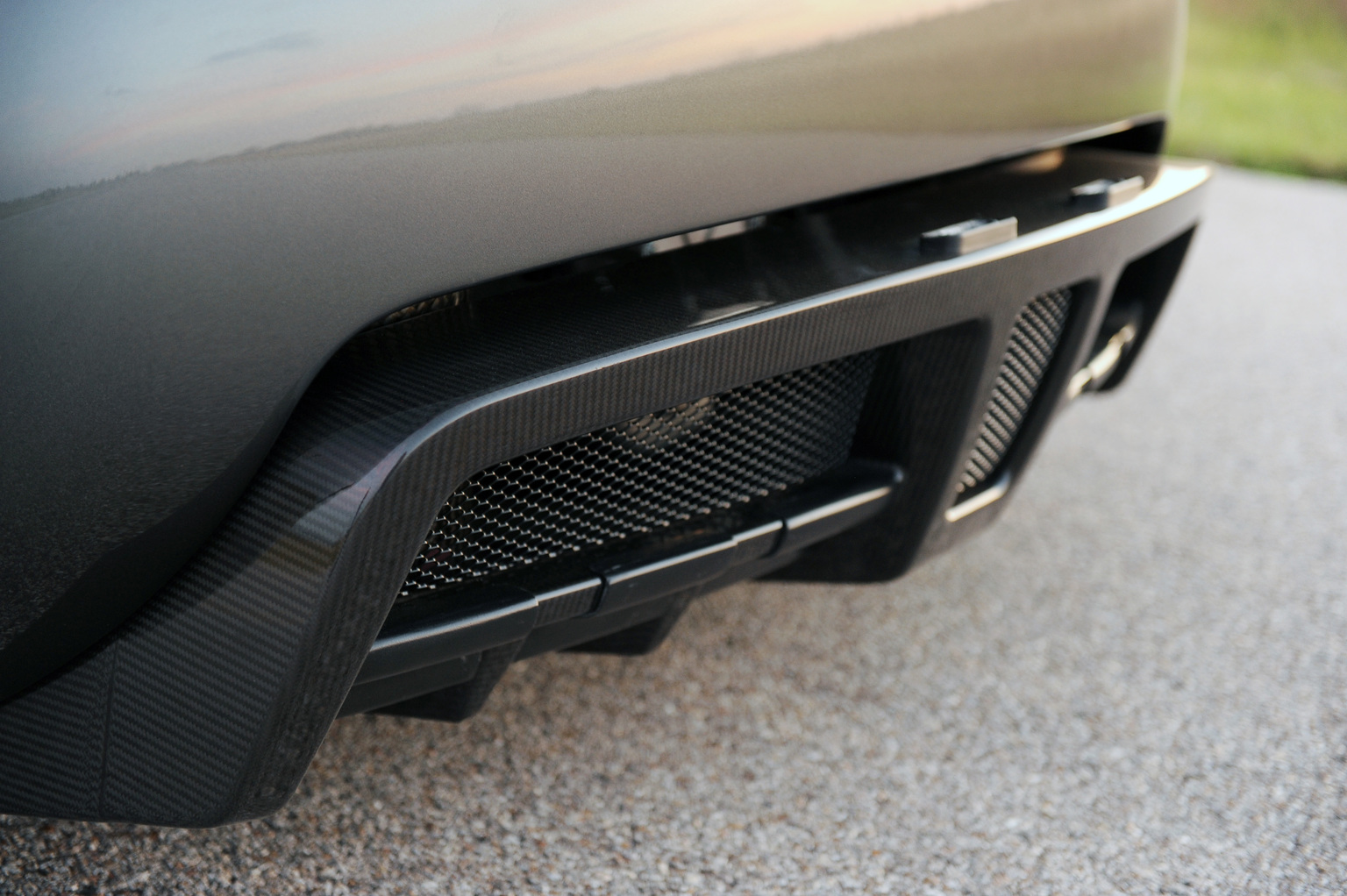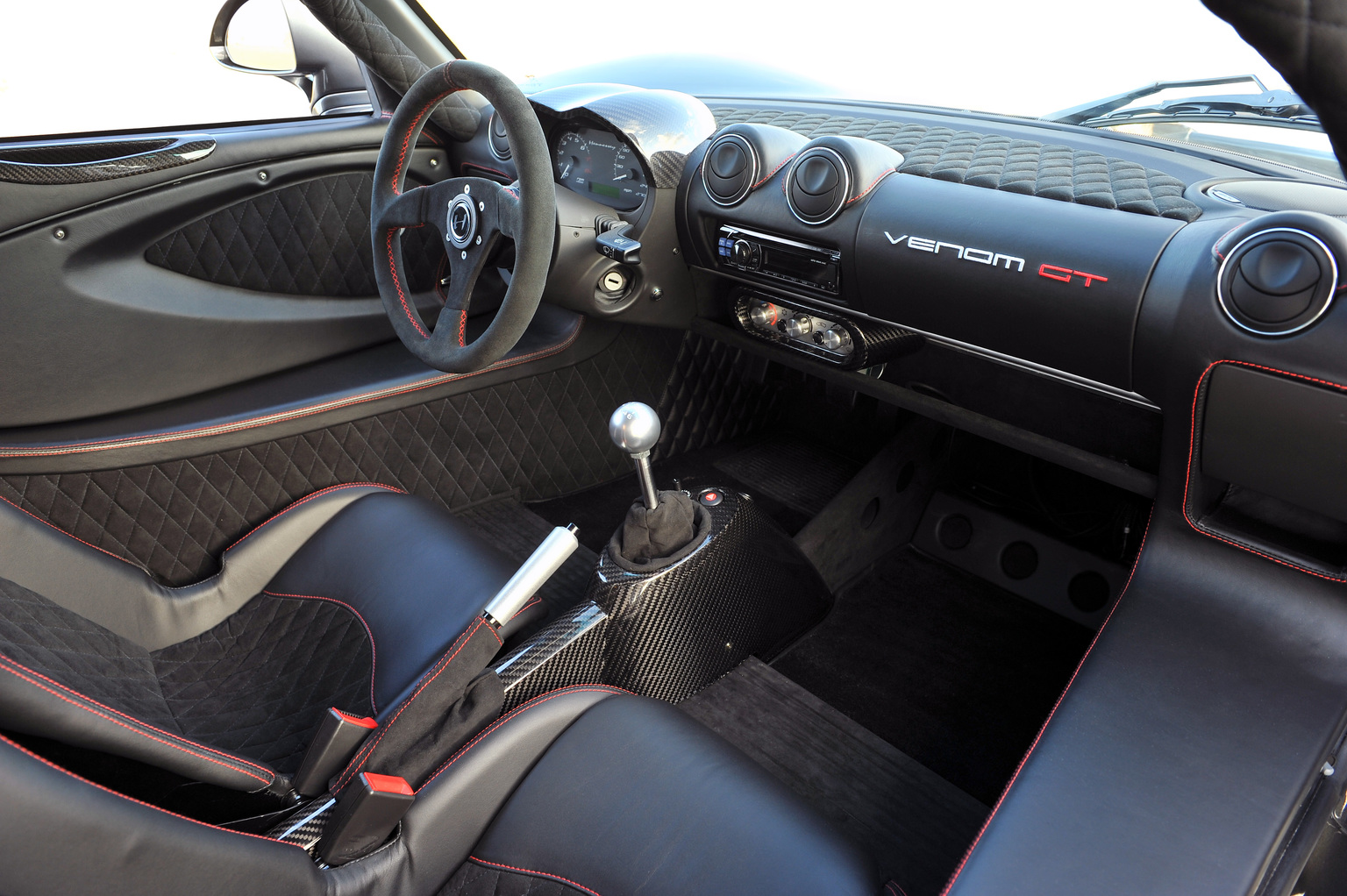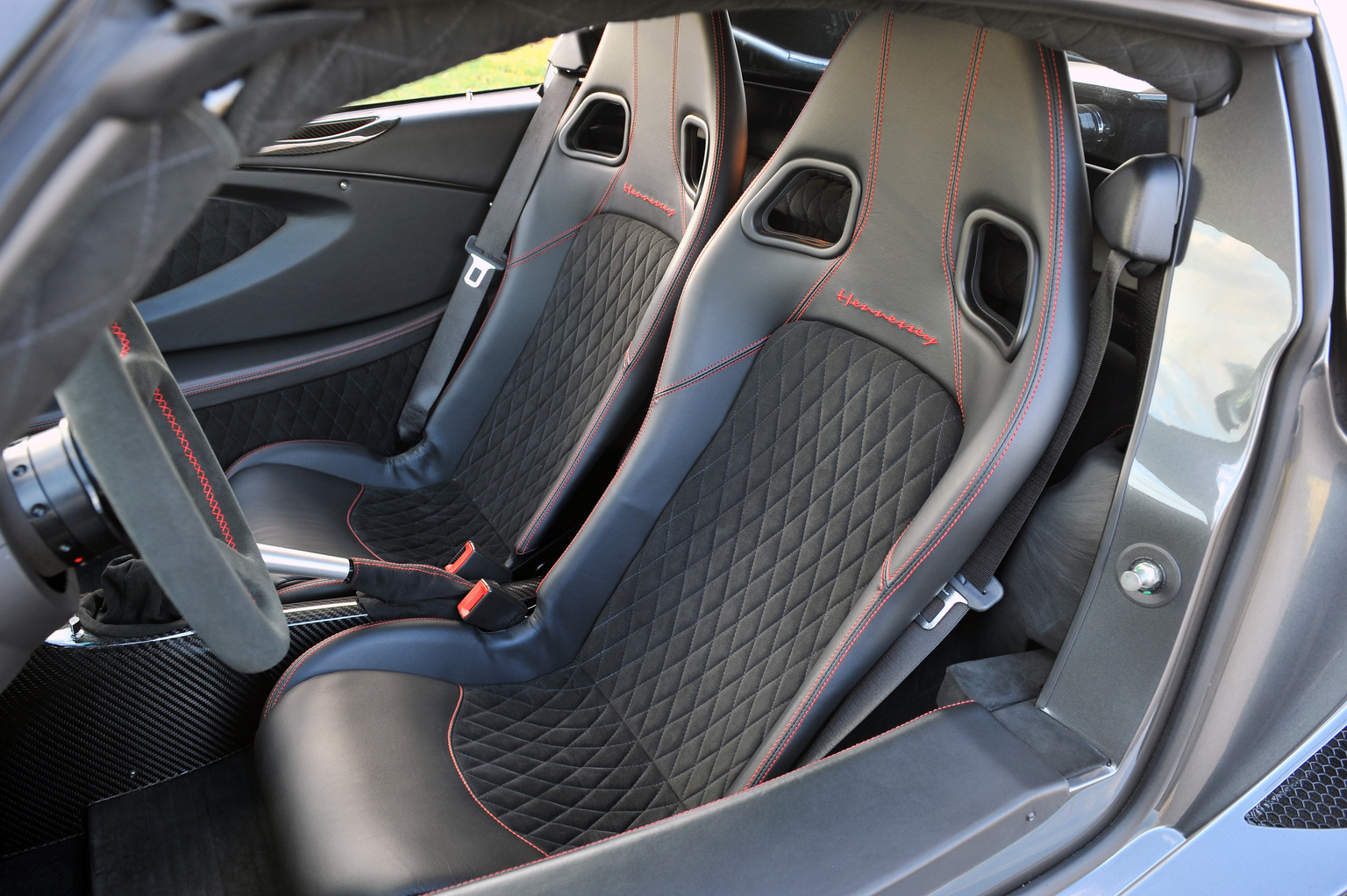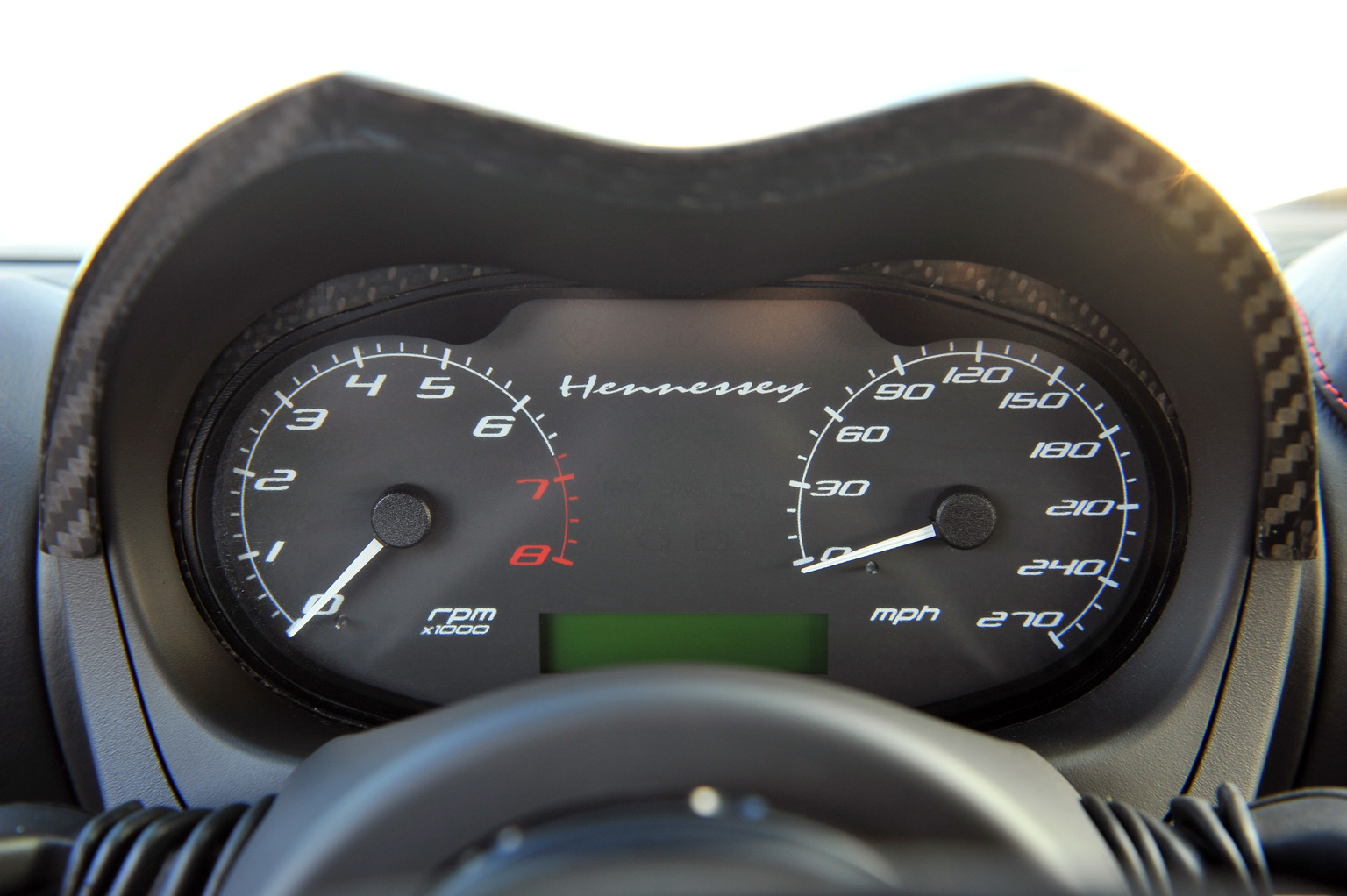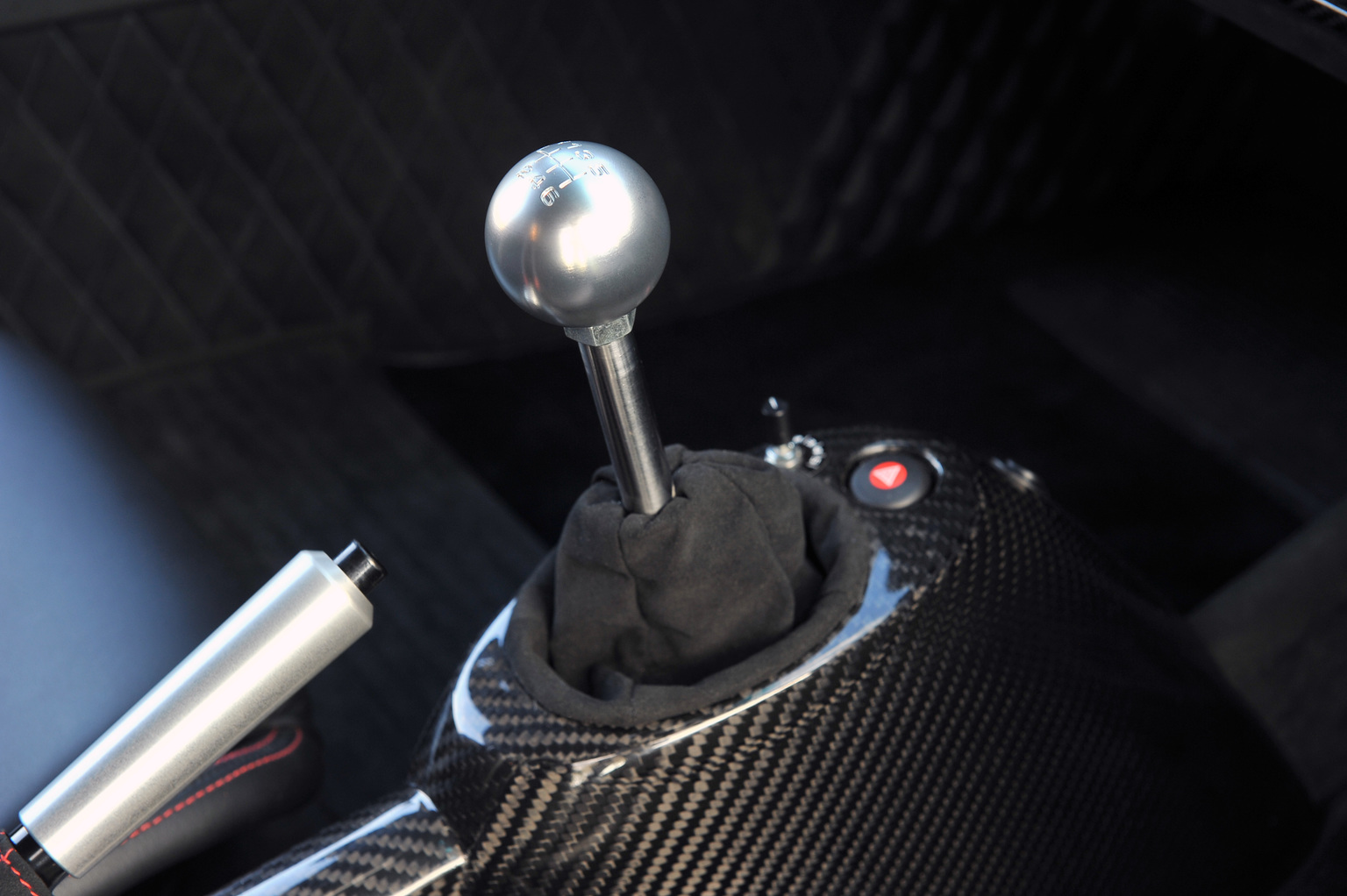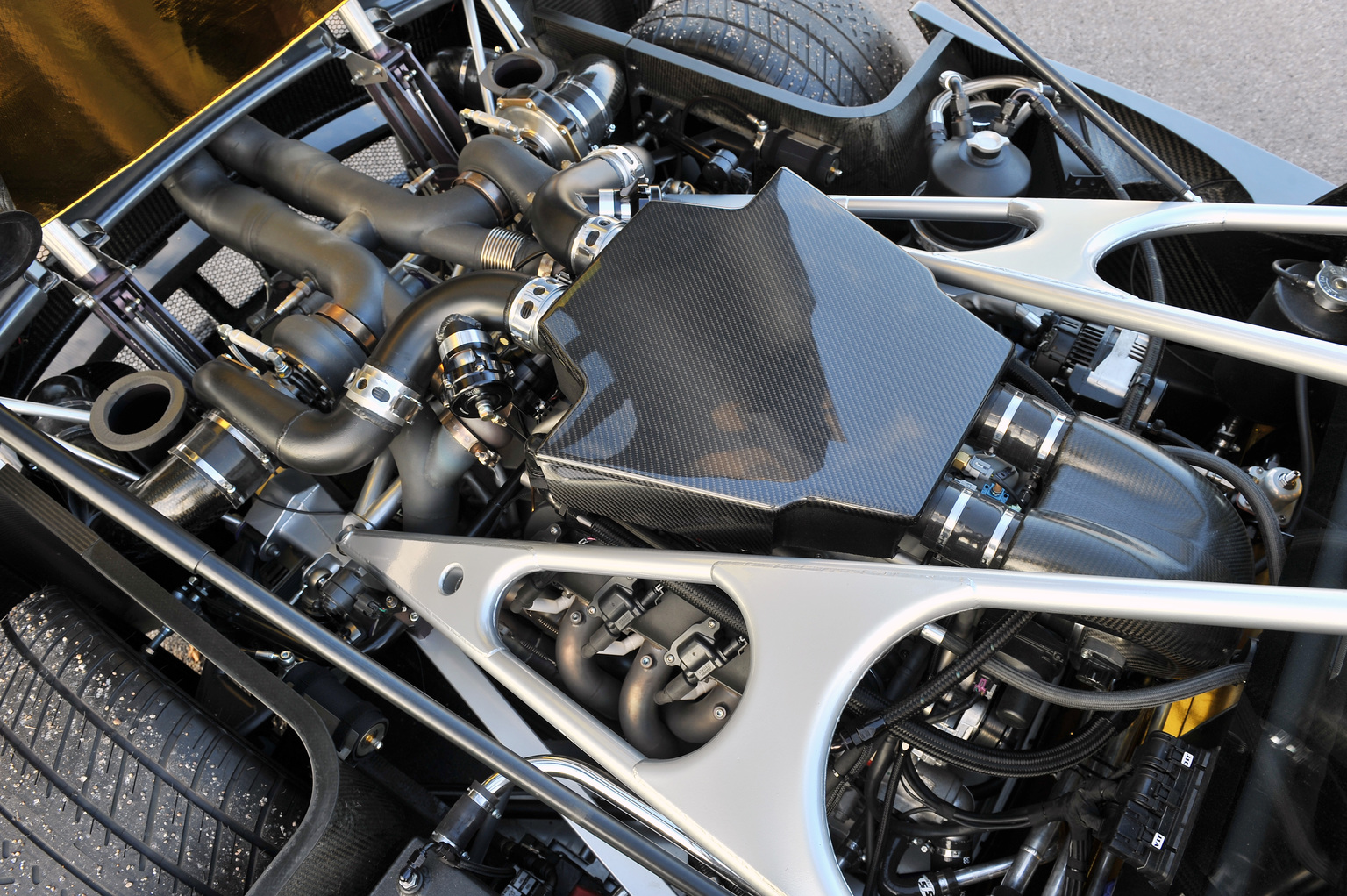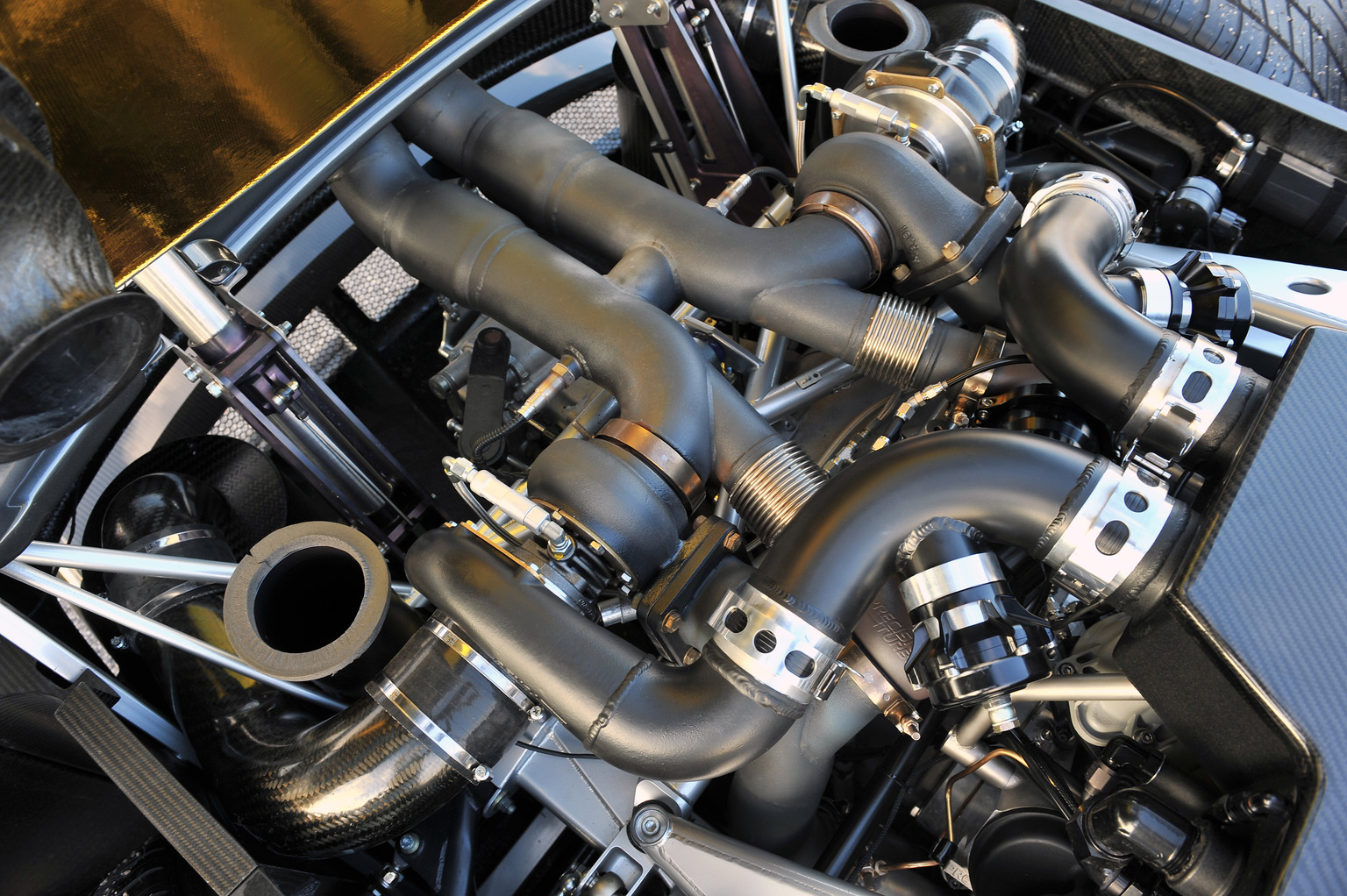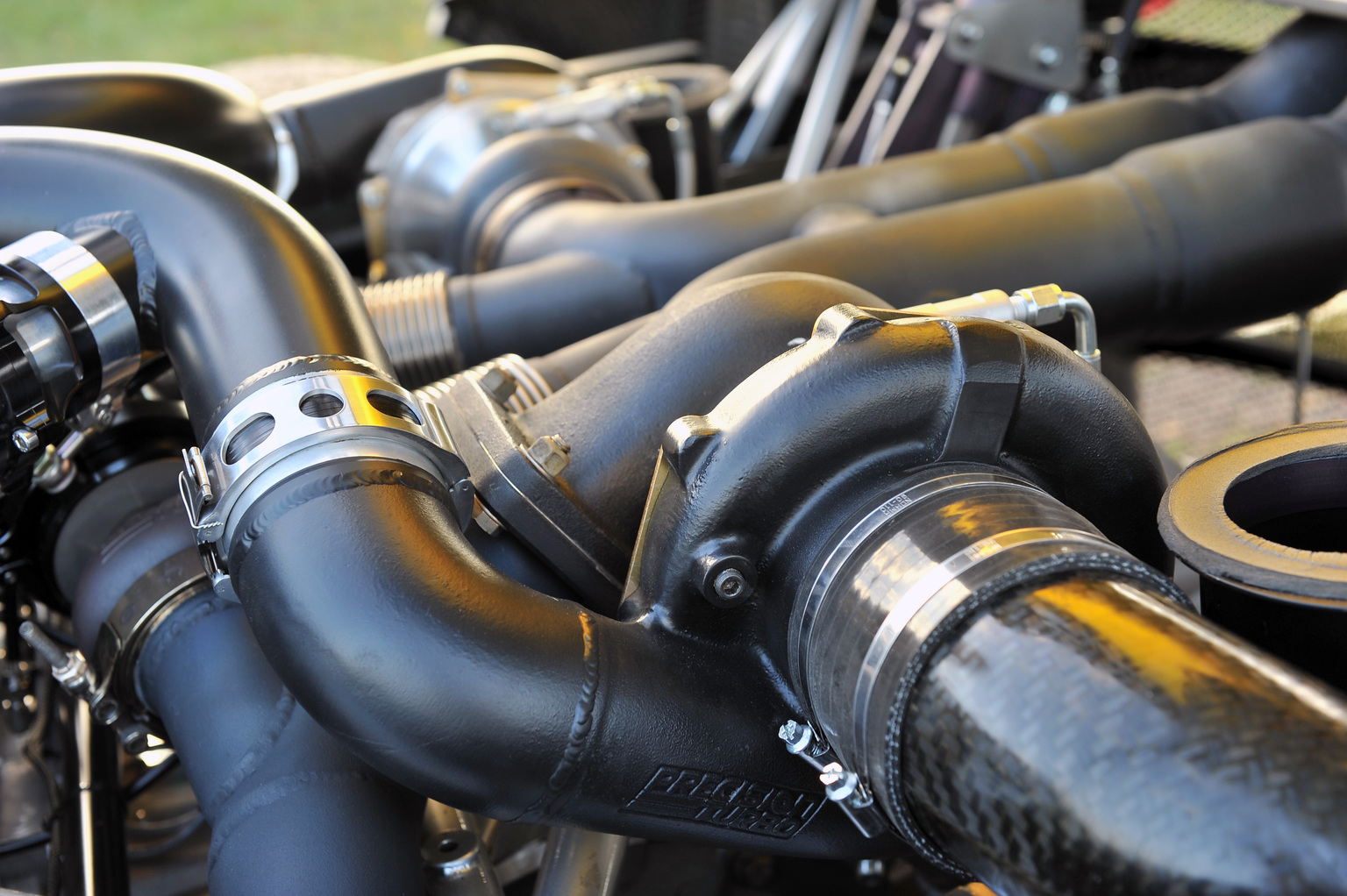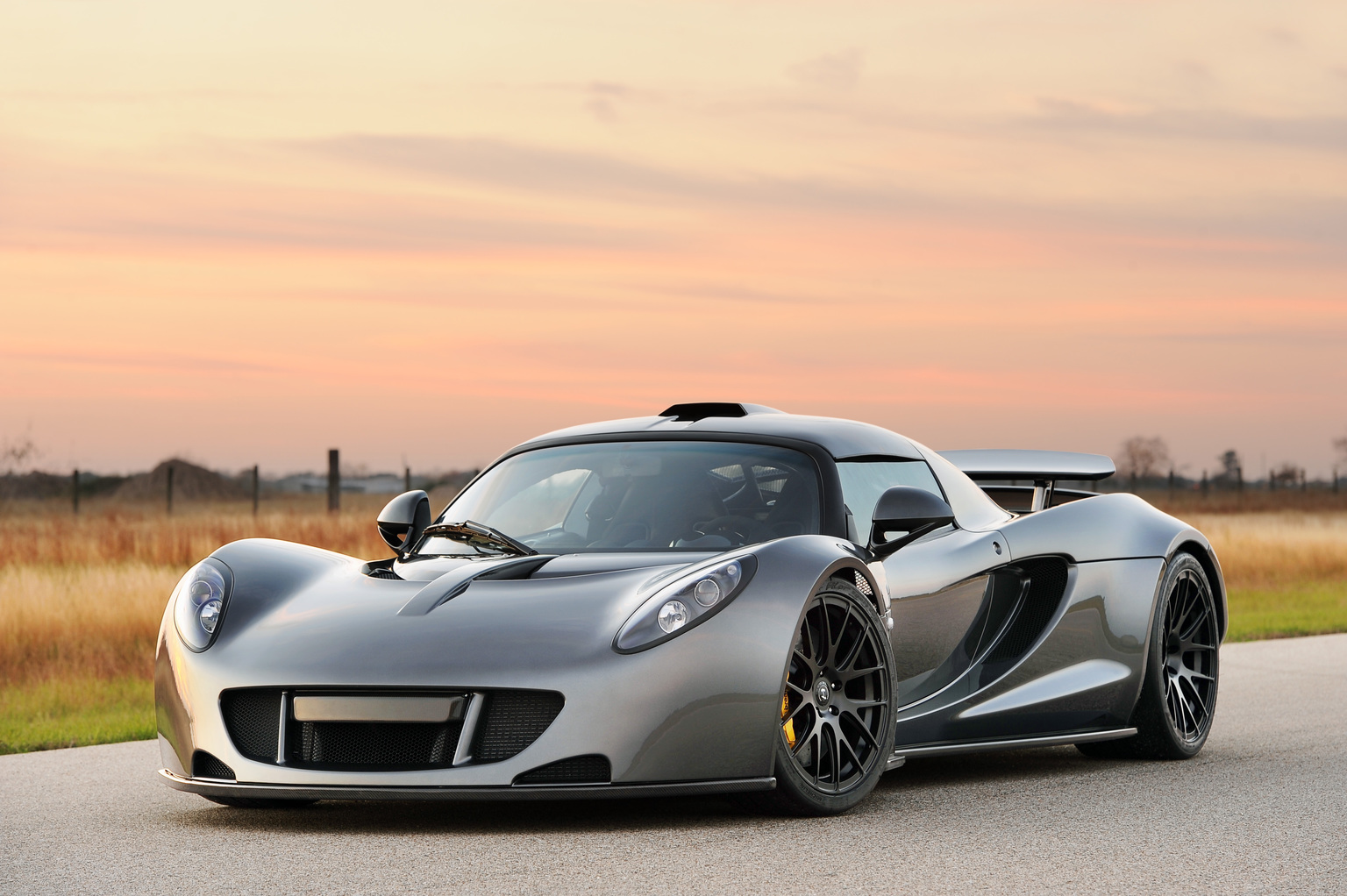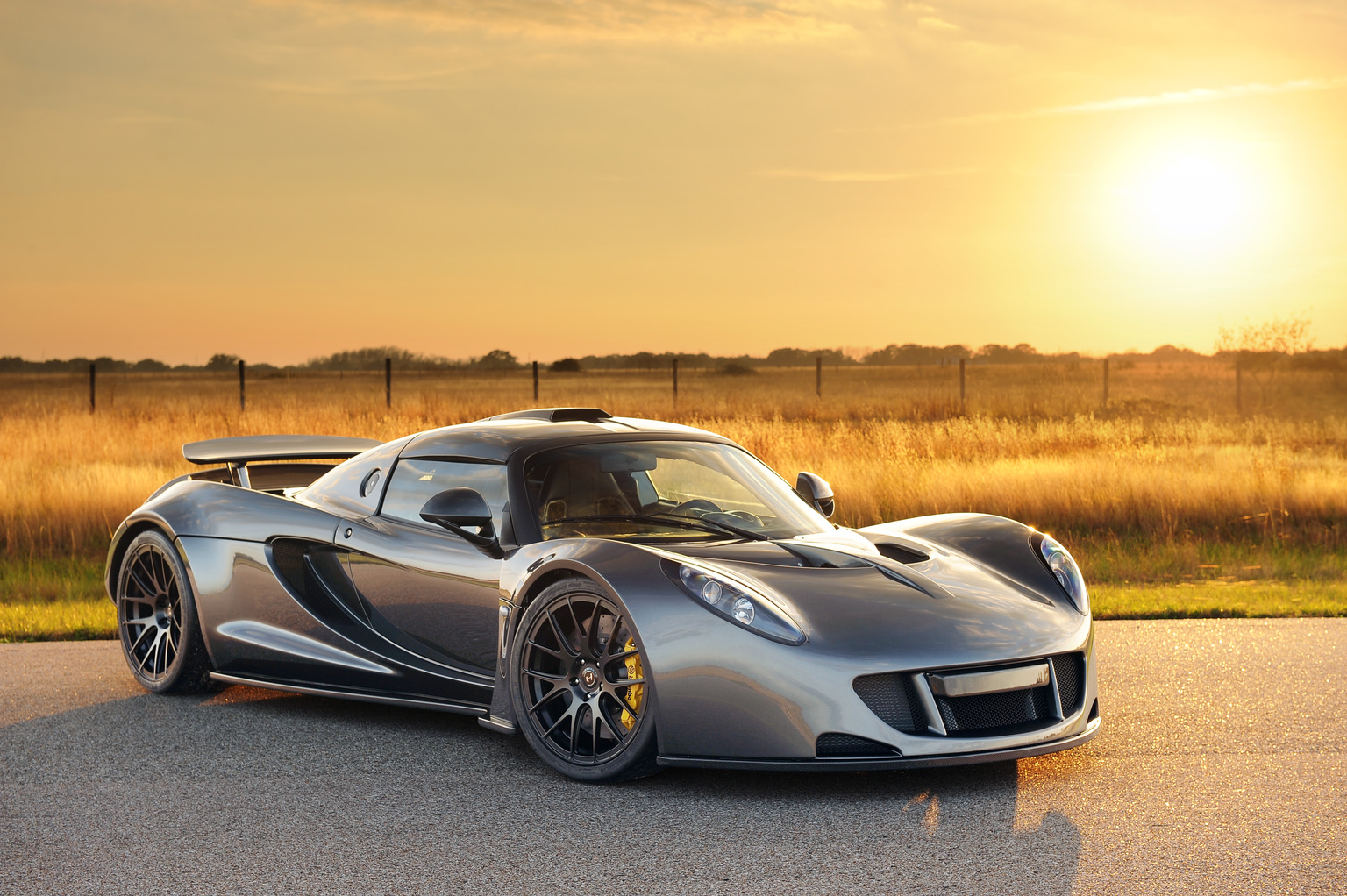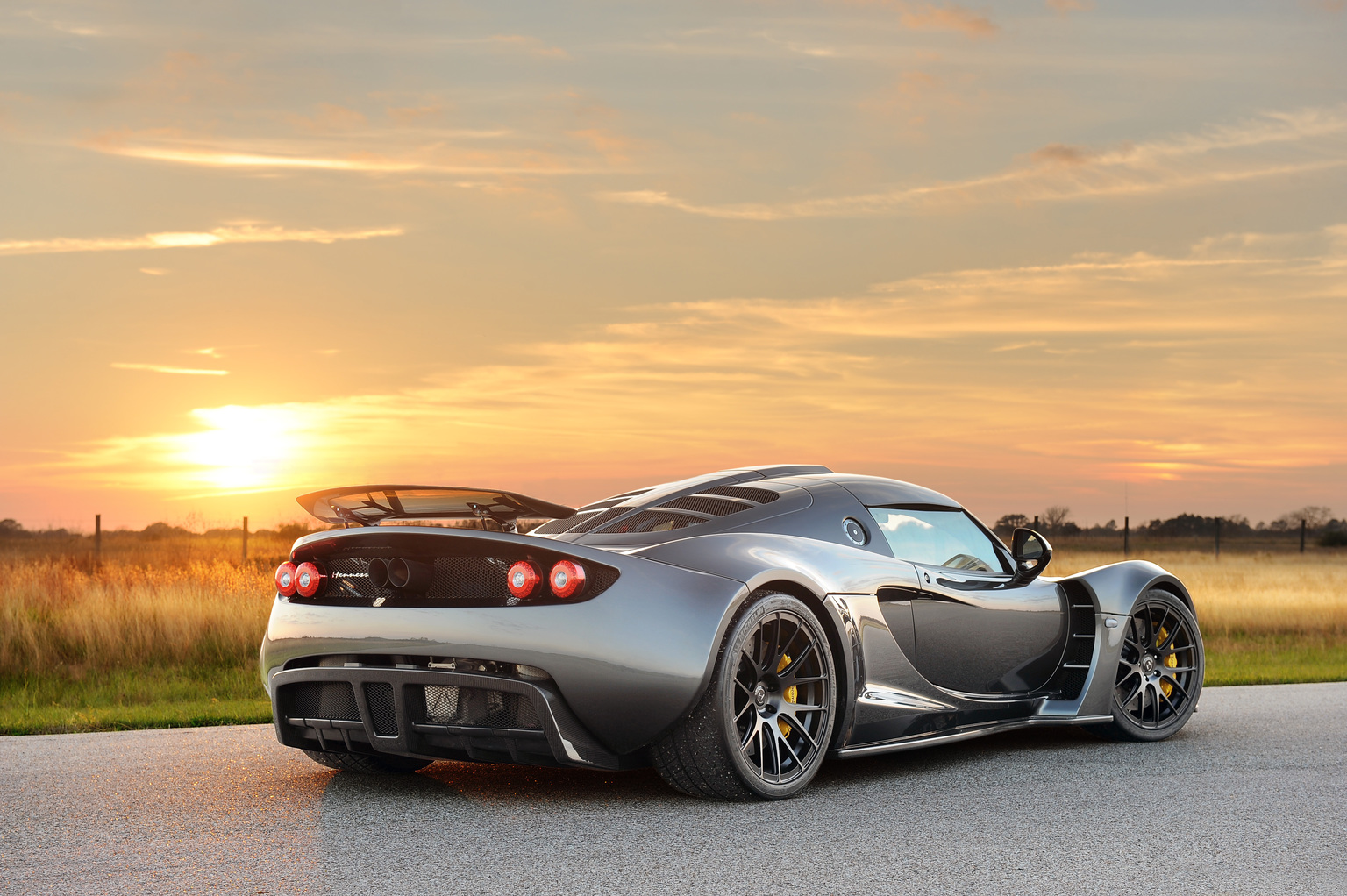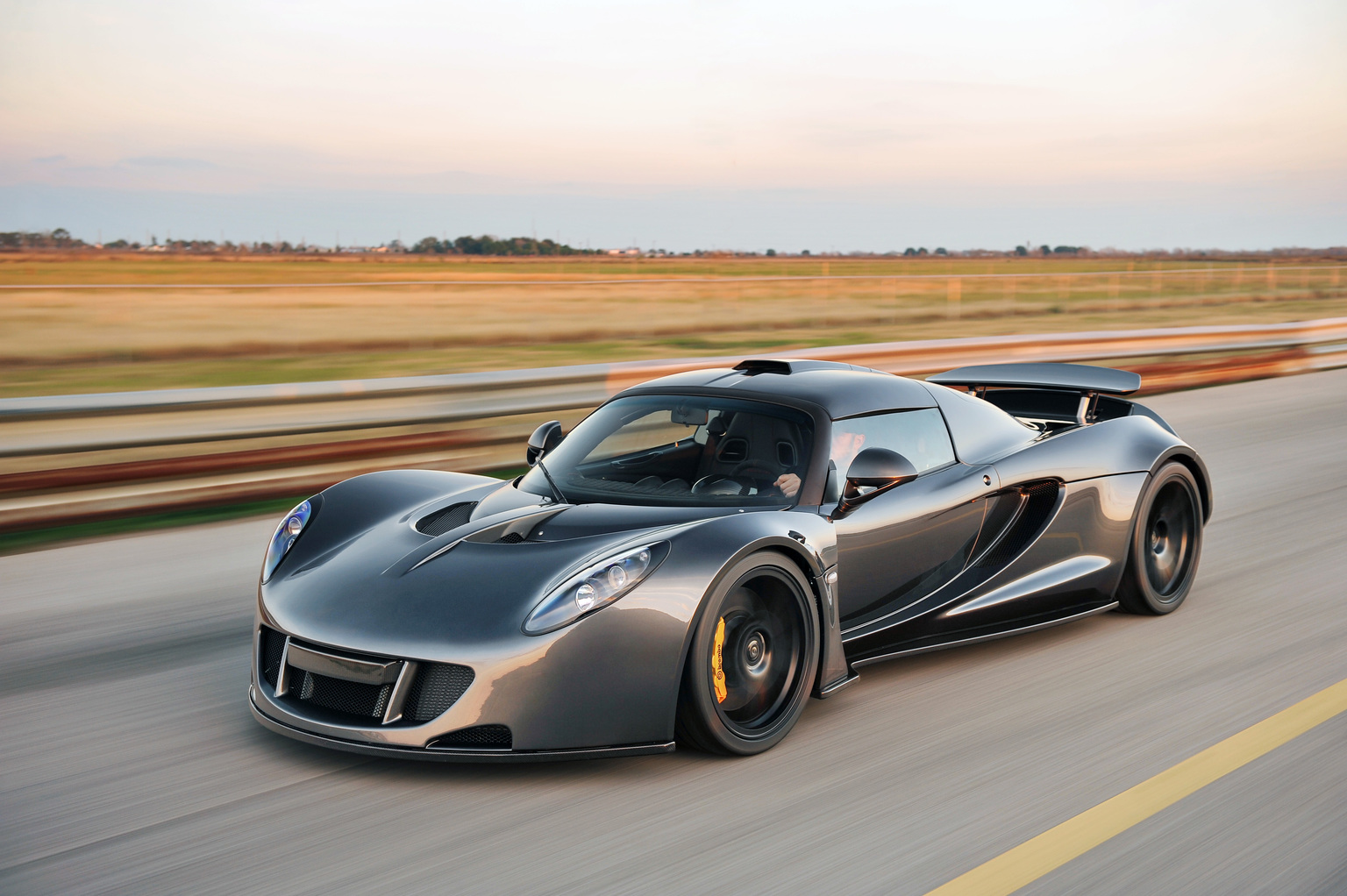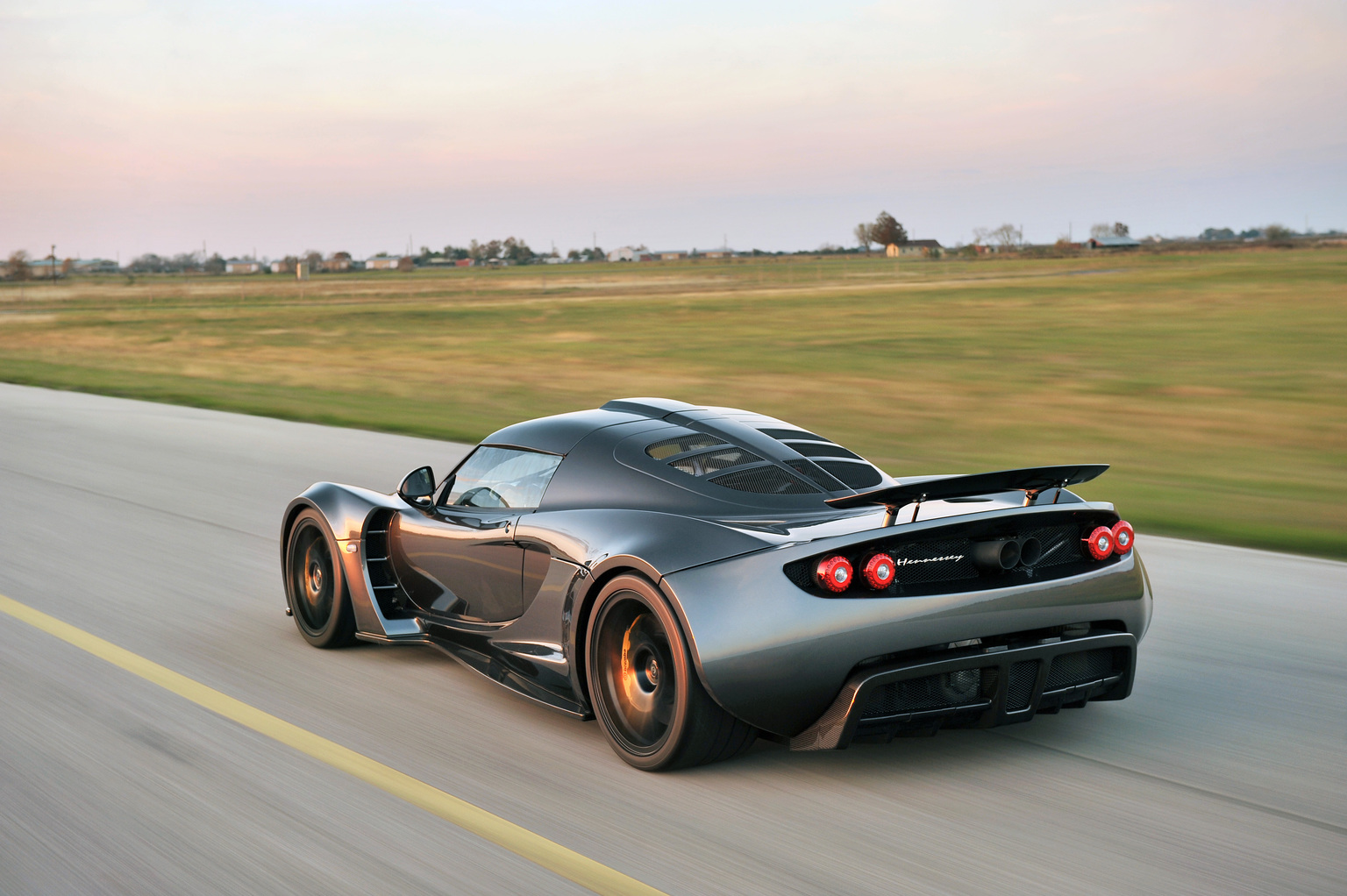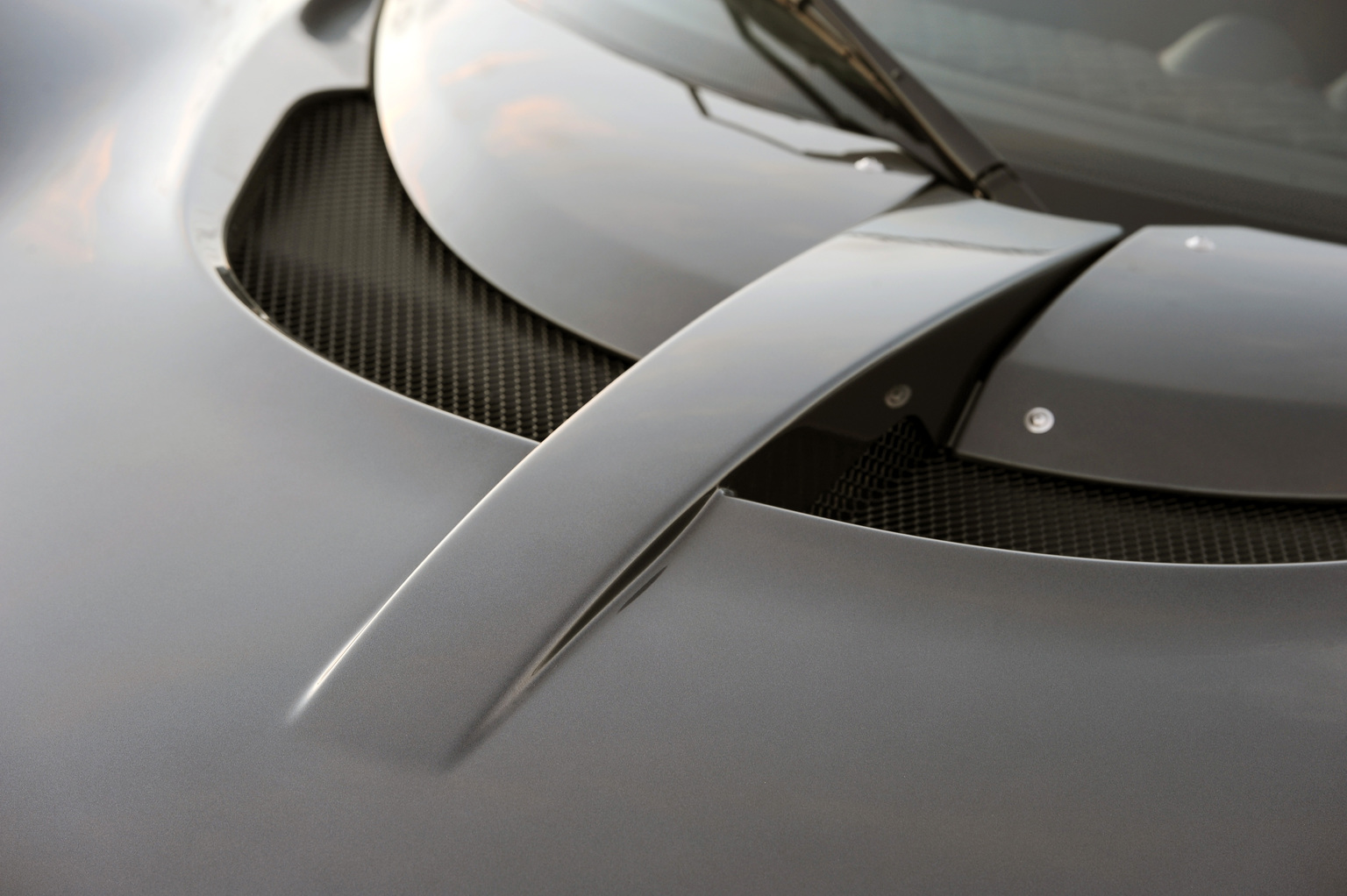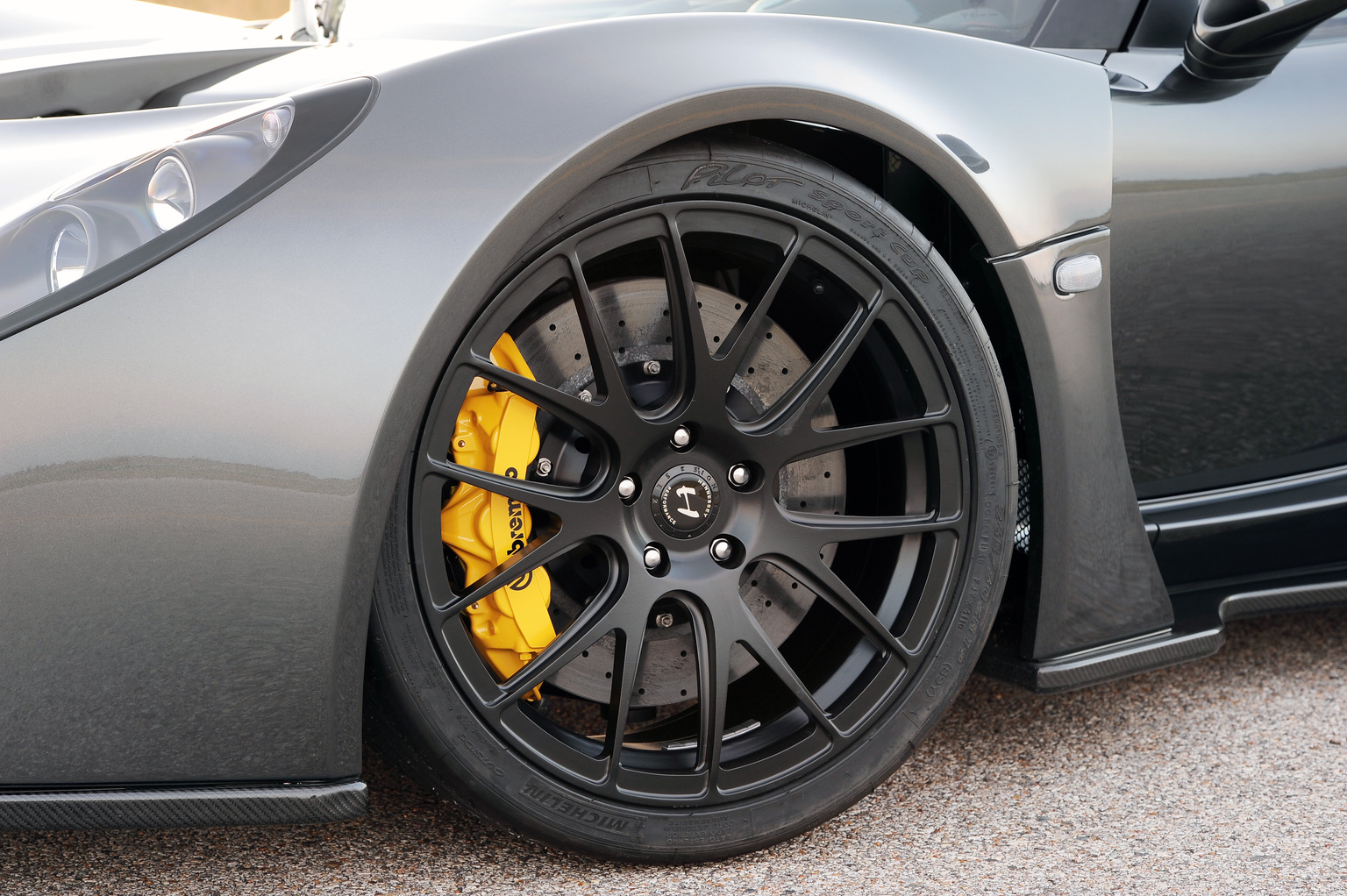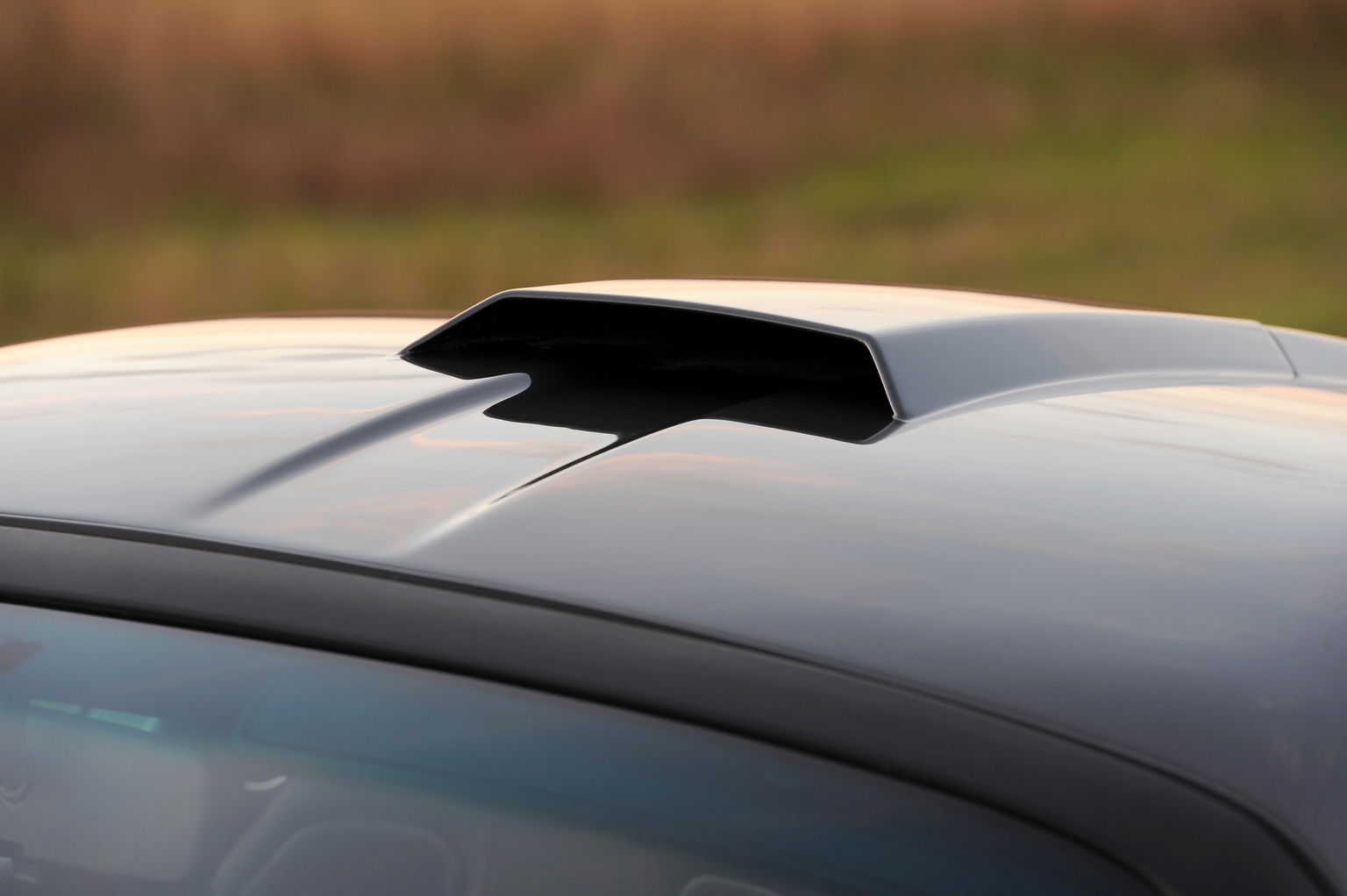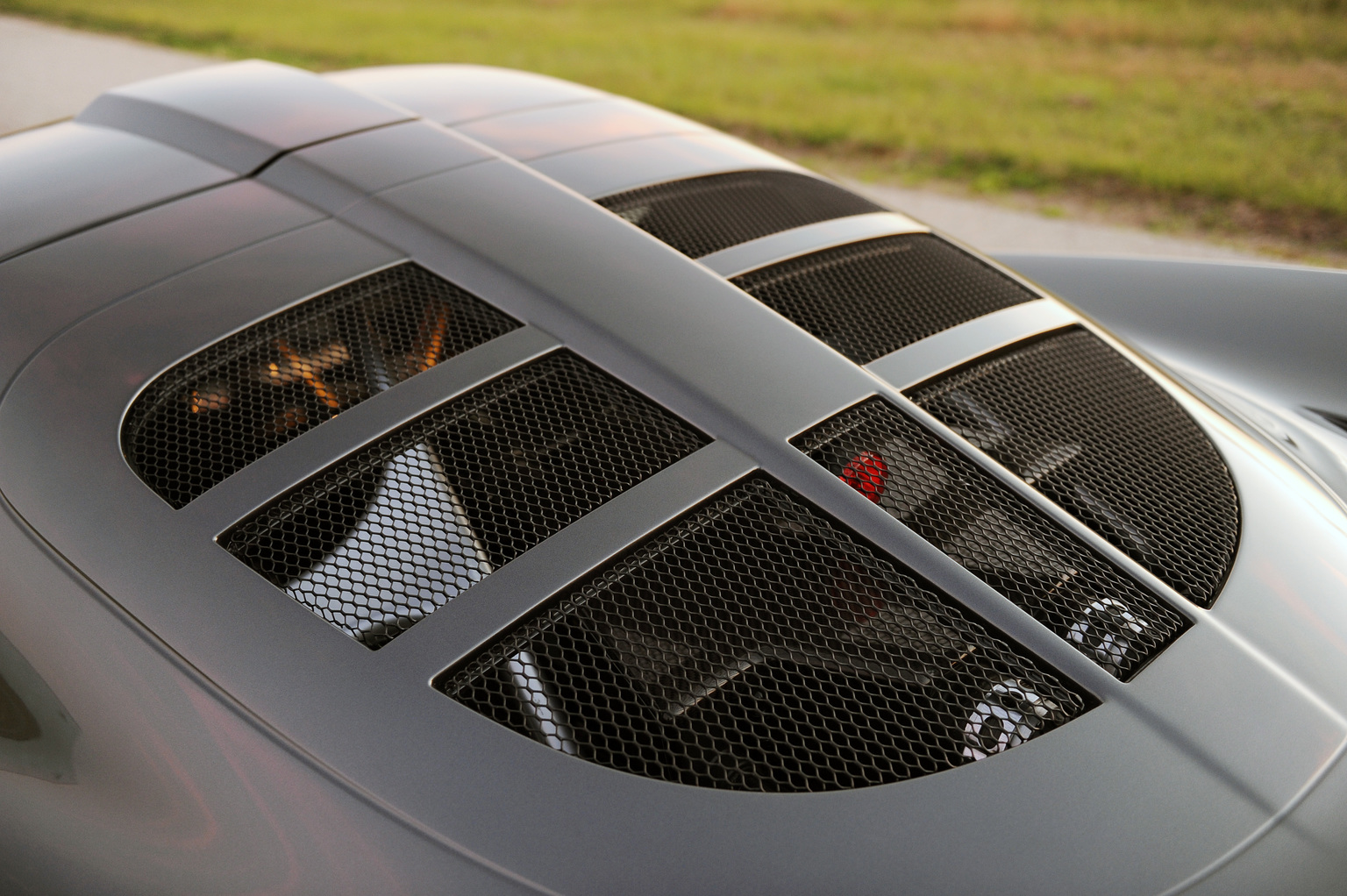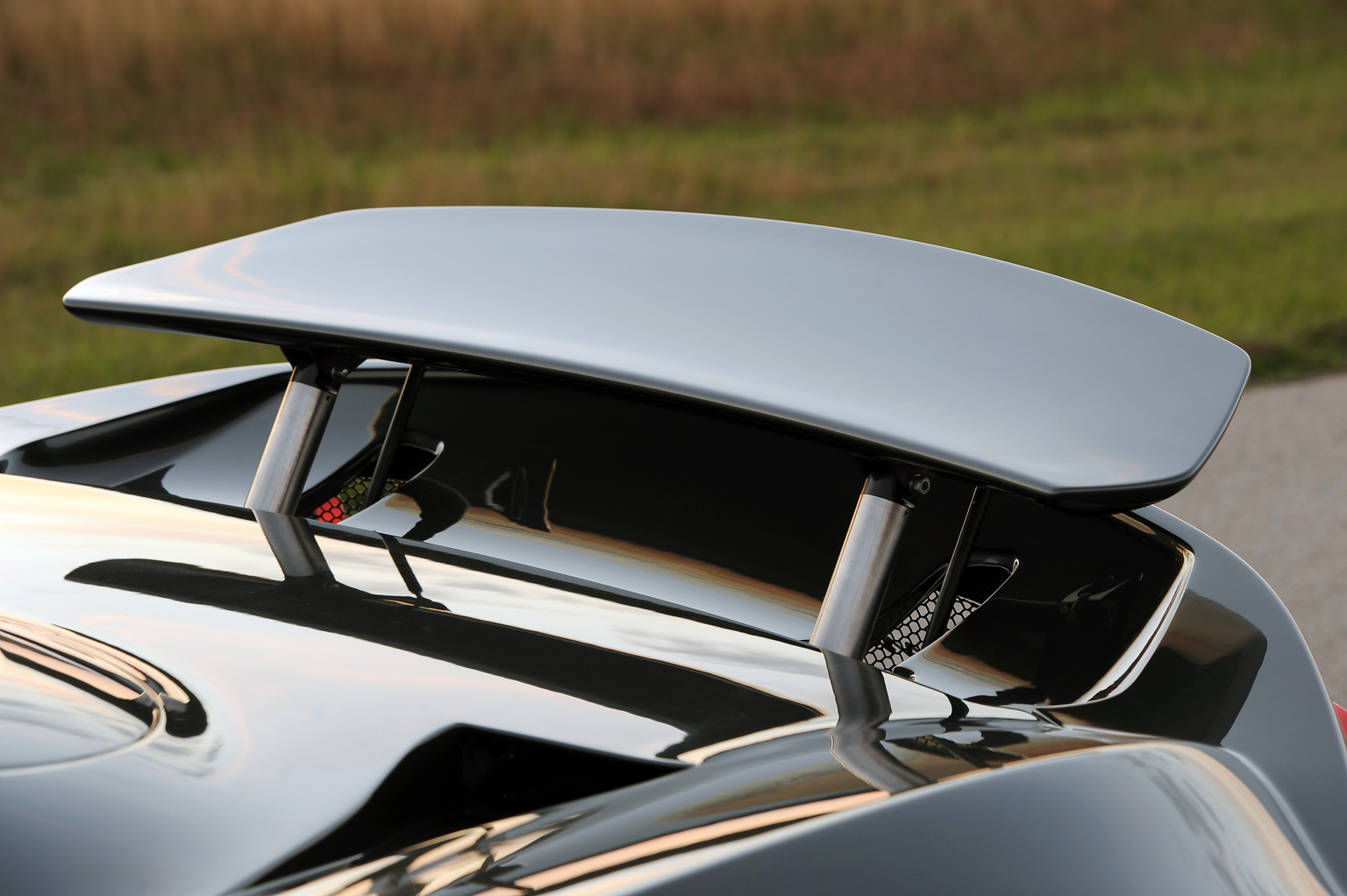2010 Hennessey Venom GT
Combining the best of the Lotus Elise and Chevrolet Corvette is the Hennessey’s Venom GT. It’s a nod to past supercars that were born from British design and American power like the Sunbeam Tiger, Shelby Cobra and Ford GT40.
With a thoroughly modern chassis from the Elise and more than enough power from the LS9 V8, the Venom set the world record for production cars in February of 2014 when Brian Smith drove a Venom to 270.49 mph (435.31 km/h) on the Kennedy Space Center space shuttle landing runway.
Venom body updates were done by Steve Everitt who has designed VenomAero kits for Hennessey dating back to 1996. His design shows a low-slung coupe which has a retractable rear wing, low frontal area and deep air intakes on the side as well as the roof.
Press Release:
Hennessey Performance Engineering (HPE) is pleased to introduce the first official images of its Venom GT supercar. Based upon the Lotus Elise, the Venom GT combines a high-tech, lightweight British chassis with a powerful American V8.
“This is not the first time that Britain and America have joined forces to produce a weapon of mass propulsion”, said company founder and president, John Hennessey. “Over fifty years ago the American-built P51 Mustang fighter aircraft was flown into history powered by a British Rolls-Royce Merlin engine. Today the Hennessey Venom GT promises to set a new standard of power to weight ratio in the rarified air of today’s supercar market.”
SOMETIMES LESS EQUALS MORE
In the case of the Venom GT, less weight means more performance. The Venom GT will have a production curb weight of less than 2,400 lbs (1,071 kilos) aided by its lightweight carbon fiber bodywork and carbon fiber wheels. Stopping power is delivered via Brembo brakes with 6-piston calipers up front and 4-piston calipers in rear clamping down on 15-inch carbon ceramic rotors.
SOMETIMES MORE EQUALS MORE
The Venom GT’s base power plant is the supercharged 6.2 liter LS9 V8 (the same as in the Corvette ZR1) tweaked by HPE to 725 bhp. The company will also be offering 1000 bhp and 1200 bhp twin turbo V8 engine variants. The mid-engine V8 will transmit its power to the rear tires via a Ricardo 6-speed gearbox.
POWER WITH CONTROL
Hennessey plans to manage power output by using a programmable traction control system. CFD (computational fluid dynamic) tested bodywork and down force will also help keep the Venom stable at speed. An active aero system with adjustable rear wing will deploy under varying conditions on both the road and racetrack. An adjustable suspension system will allow ride height adjustments according to speed and driving conditions. Finally, power will be put to the ground via massive Michelin PS2 tires at all four corners.
POWERED BY THE USA, BUILT IN THE UK
Hennessey will be building the power plants at its Texas facility. The engines will then be air freighted to the company’s assembly facility near Silverstone, England where the Venom GT is built and tested. Venom GT buyer will be offered a 1-day driver orientation and instruction program by a Hennessey factory test driver, at a track in the UK or USA prior to delivery.
LIMITED PRODUCTION
The company plans to establish a network of Venom GT dealers and distributors in the Middle East, Europe, Russia, Australia and Asia. Production is limited to just 10 vehicles per year and the company already has orders for 4 Venom GT’s.
Hennessey Venom GT Gallery
See full 2010 Hennessey Venom GT Gallery here
Specs & Performance
| submitted by | Richard Owen |
| type | Limited Production Car |
| built at | Sealey, Texas, USA |
| body stylist | Steve Everitt |
| engineers | John Heinracy |
| production | 30 |
| price $ | $ 950,000 |
| engine | Chevrolet LS2 V8 |
| position | Mid, Longitudinal |
| aspiration | Twin Garrett Ball Bearing Turbochargers |
| block material | Cast Aluminum w/A356-T6 Heads |
| valvetrain | Pushrod OHV, 2 Valves w/Cyl |
| fuel feed | Electronic Fuel Injection |
| displacement | 6205 cc / 378.65 in³ |
| bore | 103.6 mm / 4.1 in |
| stroke | 92 mm / 3.6 in |
| compression | 8.8:1 |
| power | 894.8 kw / 1200 bhp @ 6500 rpm |
| specific output | 193.39 bhp per litre |
| bhp/weight | 984.41 bhp per tonne |
| torque | 1155 nm / 851.9 ft lbs @ 4200 rpm |
| redline | 7200 |
| body / frame | Carbon Fiber Body over Lotus Bonded Aluminum Tub Chassis w/Hennessey Rear Chrome-Moly Steel Subframe |
| driven wheels | RWD |
| wheel type | Forged Alloy |
| front tires | 255/30/20 Michelin Pilot Super Sport |
| rear tires | 345/30/20 Michelin Pilot Super Sport |
| front brakes | Brembo Carbon-Ceramic Discs w/6-Piston Calipers |
| rear brakes | Brembo Carbon-Ceramic Discs w/6-Piston Calipers |
| front wheels | F 50.8 x 24.1 cm / 20 x 9.5 in |
| rear wheels | R 50.8 x 31.8 cm / 20 x 12.5 in |
| steering | Rack & Pinion |
| f suspension | KW Variant 3 Adjustable Coilover |
| r suspension | KW Variant 3 Adjustable Coilover |
| curb weight | 1219 kg / 2685 lbs |
| weight distro | 40 % / 60 % |
| wheelbase | 2800 mm / 110.2 in |
| front track | 1612 mm / 63.5 in |
| rear track | 1604 mm / 63.1 in |
| length | 4655 mm / 183.3 in |
| width | 1960 mm / 77.2 in |
| height | 1079 mm / 42.5 in |
| transmission | Ricardo 6-Speed |
| gear ratios | 2.61:1, 1.71:1, 1.23:1, 0.94:1, 0.77:1, 0.63:1 |
| final drive | 3.36:1 |
| top speed | ~435.22 kph / 270.49 mph |
| 0 – 60 mph | ~2.5 seconds |
| 0 – 1/4 mile | ~9.95 seconds |
| fuel capacity | 70 litres or 18.48 gal. |


